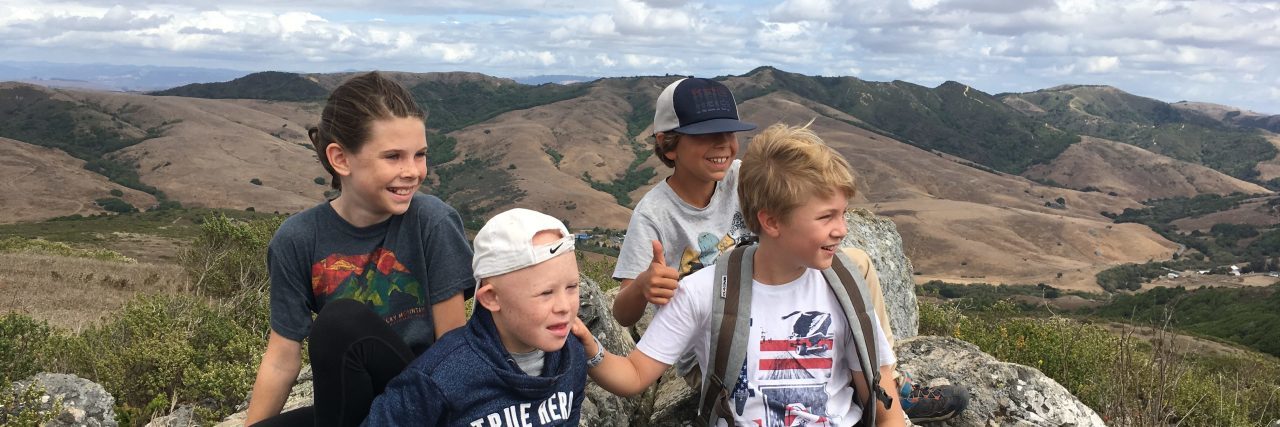Before my son, my eldest child, went into kindergarten seven years ago, I attended an inclusion workshop hosted by the University of San Francisco. I credit it for opening my eyes and ultimately changing the course of my children’s lives for the better.
I had allowed my son to attend a segregated preschool because I drank the Kool-Aid when I was told it was “best for him.” I learned through experience that the path of segregated education was not going to serve him. I observed that grouping kids with challenges tended to breed more challenges, especially behavioral ones, and progress in some areas like speech was stifled. It was such an unnatural environment lacking in diversity, which is a stimulus for growth.
It wasn’t better as they told me it would be. And I had no idea how the school districts pigeonholed these kids into segregated educational settings for the remainder of their education. It was hard digging my son out of that hole due to the prejudice at our local school district and their bullying of parents into sending their children to local SDCs or away from their neighborhood schools to segregated schools further north.
I was determined to find a better solution than any form of segregation. That is when I discovered the practice of inclusive education while doing an internet search.
I was miffed that segregated education even existed in the present day and flippantly typed in something like, “It’s not the 1950s, so why are schools still segregating children with disabilities?” I found it all so absurd and was prepared to take on this injustice myself if needed.
Apparently others had taken that frustrated, smart-aleck tone with Google before because Inclusive Education appeared in response to my query. I couldn’t believe what I was seeing. Such a thing already existed and has been implemented for years throughout the country? The inclusion model produces better outcomes for both disabled children and their neurotypical peers, with data to back it up? My entire body moved closer to the screen as I stared in disbelieve, hope filling my heart. There is even a roadmap for schools and educators to guide them? There it was in black and white. I had found what felt was right from an educational, sociological and ethical standpoint. My son would have a chance at a life that could include an actual diploma, a job, and avoiding a life of poverty those with disabilities who lack an appropriate education experience at disproportionately high rates.
As part of that internet search, I discovered the USF inclusion workshop. It couldn’t have been better timing. Since attending that workshop, I have immersed myself in inclusive education research and advocacy. Those who know me will tell you that I am an unwavering advocate for full inclusion for all kids, not just mine. There is no child so exceptional that they don’t belong, that can’t learn alongside their peers, that can’t take breaks when they need them in a more socially normalized environment. There are known successful inclusive practices already in existence and validated. We have developed a full inclusion program at my children’s school that continues to evolve, yet even in it’s earliest inception, transformed my children’s lives and that of the entire school campus.
Why full inclusion, which is 100 percent engagement in the gen ed classroom, rather than spending partial time in an SDC or learning center? Special education is not a location. They are supports and services that are brought into the gen ed class with the child. Special education as a separate entity delivered in a different space meant exclusively for children with disabilities has not proven to be effective. There is no data to support it. None. Inclusion works. There is data to support it.
My children access the grade level curriculum in a manner that is appropriate to their abilities. Their progress is documented and reported on separately from their IEP goals. My children’s education is not limited to their IEP goals; in fact, I look upon those as secondary. What matters most in my children’s educational lives is what happens in the gen ed classroom. It is access to that curriculum for which the law is referencing because it most directly influences long-term outcomes. My kids need to be in that classroom — not just present, but learning alongside their peers. It’s essential.
Finally, and this is very important, when teachers, parents, other students or casual observers see or are aware that a child goes to a separate location during the school day that is related to “special needs,” it triggers something in their brains that differentiates that child from other children and can have lasting implications for that child’s socialization, teacher expectations, friendships, self-worth and even future employment. There are more normalized, non-stigmatized environments to be found where children who need sensory breaks can hang out. There are better solutions to adapt to the needs of children with disabilities other than these segregated environments. I am committed to creating these solutions for my children and others who choose this path in my community. No child should be excluded regardless of severity of disability.
If you are interested in learning more about inclusive education, I recommend SWIFT Schools and the National Center on Inclusive Education. The information and support provided by these resources may allay some fears and instill hope and inspiration that your child has a broader range of options. Even for those who feel their child’s separate schooling is working for them now, having more options to inspire new ways of looking at your own unique circumstances can be helpful.

